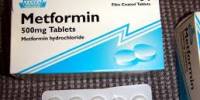Existing products development:
Product Development Department also develops the formulation of the existing products. They do the following works-
- Increasing the quality of the product.
- Prevention of any type of problem existing in the product.
- To save time and cost.
- Increasing the patient acceptance.
Activities done by product development department:
- Preformulation study of the active ingredients, which includes collecting all available information of the active regarding its formulation its formulation , physical, chemical, therapeutical, toxicological, microbiological (if necessary) data.
- Trail of the product in small scale that includes the entire manufacturing procedure.
- Comparative study on market sample for newly developing product and for existing product.
- Physical and chemical analysis of the newly developed products.
- Accelerated Stability Study of the new products.
- In case of INN products, raw material analysis and method development for dissolution procedure.
- Process Validation of 3 consecutive batches.
- Stability & chemical analysis of the products those are included in compendia (BP/USP) which often include HPLC analysis.
Reformulation of Existing Product:
- study on market complaint products to minimize complaint, which include-
- Root cause analysis of the complaint,
- Reformulation of the product,
- Trail,
- Chemical analysis and
- Stability.
Shape change, coating color change or changing other parameters of any product that includes reformulation of the product, trail chemical analysis and stability.
Source evaluation of active ingredients and excipients that needs several trails for individual product.
Documentation:
- BMR preparation of all new products.
- BMR of existing product due to the batch size or other parameter.
- Stability data (accelerated and real time) preparation for export.
- Technical part of Recipe.
- Correction of Product Brief and Annexure.
- Process validation documentation.
Steps of the development of a new product:
Step-1: Product information from marketing department along with ………..
necessary attributes such as
– Source
– Sample
– Q.C test (potency. LOD etc)
Step-2: Pre-formulation study of the active drug and excipients.
– Chemical activity.
– Function.
– Interaction.
– Boiling point.
– Contraindication.
– Moisture content etc.
Step-3: Collection of raw materials of active drug and excipients.
Step-4: Different trials for development of a stable, effective and active
formulation.
Step-5: Drug administration formalities include:
a) Submission of recipe to drugs administration which contains –
– Strength
– Dosage form
– Contraindication
– Dissolution
– Description
– Precaution
– Side effect
– M.R.P.
– Indication
b) Sample admission (if INN product)
c) Approval of sample from drug administration and inclusion of
D.A.R. and license no.
d) Submission of Inclusion Dossier.
e) Final approval for commercial production.
Step-6: Pilot trial and accelerated stability testing.
Step-7: Readjustment If necessary.
Step-8: BPR preparation if every aspect is satisfied which contains:
– Product name
– Code
– Size
– batch no
– Theoretical yield
– Batch size
– Annexure etc.
Step-9: Transfer to production department commercial production.
Quality Assurance
Department
| Q |
uality Assurance is an organized department in ACI Pharmaceuticals Ltd. which deals with ensuring the quality of the product up to the end user. This department plays important roll to maintain the quality of product. QA issues the release or reject order of product by analyzing QC reports.
Activities of Quality Assurance Department are given below-
- Approval of source
- Checking of Dispensing operation
- In process checking of all production area
- Product sampling , release
- Product complaint handling
- Supplier’s performance review
- Conducting quality audit
- Perform all type of Validation activities
- Document preparation, editing, control etc.
- Retention sample collection, archiving, monitoring, retrieval etc.
- Product quality review(Annual/Periodic)
- Artwork preparation, checking, finalization for packaging material
- Preparation of certificate of analysis (COA) for finished formulation and finished API.
- Establishing manufacturing methods and SOPs covering entire operations and their regular up-dating.
- Communication of every aspects relating to quality to all relevant persons for early positive action.
- Ensuring product Stability
Quality Control
Department
| Q |
uality Control Department at Advanced Pharmaceutical Industries (ACI) Limited is to keep the quality up at their products and responsible for the day-by-day control at quality within the company. This department is stuffed with scientist and technicians who assess and assure that entire production process has been completed satisfactorily and satisfied all the aspects of GMP.
Working Division of Quality Control Department:
- Analytical section
- Microbiology section
- Packaging section
Analytical Section:
Analytical section of Quality Control Department performs analytical tests. Analytical tests are mainly of two types as follows:
- Quantitative
- Qualitative
Stability Study
Mainly for finished products, Quality Control Department performs stability study. Aim of this study is to ensure that all batches of the released products are maintaining within specification limits throughout their entire shelf life.
Stability study is performed according to International Conference on Harmonization (ICH).
| Type of Study | Experimental condition |
Real time study for climate zone 3 & 430º C ± 2º C temperature
65 ± 5% Relative Humidity
Accelerated study40º C ± 2º C temperature
75 ± 5% Relative Humidity
An intermediate stability study is also performed at 30º C ± 2º C temperatures and 65 ± 5% relative humidity. If 30ºC ± 2ºC temperature and 65 ± 5% is the long-term condition, there is no study required for intermediate condition.
Tests performed in QC department in ACI-
A. Test for tablet and capsules-
- Loss on drying at 105ºC(3hr)/ Moisture content by KFR
- Disintegration test
- Length/diameter
- Width
- Thickness of 10 tablets
- Friability test
- Dissolution test
- Uniformity of weight
- Appearance of tablets or capsules
- Average hardness of tablets
- Assay by titration/ spectrophotometric /HPLC/AAS method
B. Tests for raw materials:
1. Appearance and odor
2. Solubility
3. Identity (complies/ not complies)
4. Melting point
5. Weight per ml
6. Acidity/ alkalinity
7. Limit test
8. Chloride
9. Sulphate
10. Copper
11. Iron
12. Arsenic
13. Lead/ heavy metals
14. Loss on drying at 1050C (3hrs)/water content by KFR
15. Appearance of solution/ Clarity & color of solution
16. Assay-
a. Chloride
b. Spectrophotometric / Titrimetric /HPLC
c. Residue on ignition/ sulphated ash
d. Related substances/ Chromatographic purity
e. Microbial limit
C. Tests for LCO / Gel / Dry syrup / drop:
1. Identification of active ingredient
2. Identification of Hydroxy benzoates
3. Microbial contamination (satisfactory/ unsatisfactory)
4. PH value
5. Water per ml at 20± 0C, gm
6. Viscosity
7. Sedimentation test
8. TOTAL SOLID
9. Color content
10. Alcohol content
11. PCA content (Parachloro aniline)
12.Assay (Spectrophotometric/Titrimetric/HPLC)
D. Test for WFI-
- Contents of vial/ bottle
- Sterility test
- PH value test
- Ammonia test
- Nitrates test
- Chloride test
- Sulphate test
- Acidity/ alkalinity test
- Oxydizable substances test
- Hevay metal test
- Ca & Mg test
- Residue on evaporation
- Conductivity test
- Water content
Machinery in Quality Control Department:
| Number | Machine Name | Model Number | Origin/ Source |
1.HPLC,QAD 023Shimadzu, Japan2.HPLC 515&2487Shimadzu, Japan3.UV Spectophotometer3000 4.IR Spectophotometer 5.Optical PolarimeterAA-5 6.Microprocessor Ph mteterPh 539 Rs 7.Microprocessor Ph mteterHanna ph 210 8.UV visiable SpectophotometerUV-1601PCShimadzu.9.Karl Fischer Titrator, metter teedoDL31 10.Karl Fischer Titrator, metter teedoDL 18 11.Automic Absorption Spectroscopy 12.Vibrator,Edmund buclerKl-2 13.Analytical electronic balanceGF-300Sartorius AG, Germany14.Milting point Tester,buchi Melting pointB-540 15.sonicator
Machinery in Quality Control Department:
| Number | Machine Name | Model Number | Origin/ Source |
16.Magnetic Stirrer 17.Tablet Hardness & Diameter tester6 DSchleuniger Pharmatron18.Water Purification SystemAlpha-Q 19.Brookfield ViscometerDV-I 20.Disintegration TesterSK-32020Shin Kwang machinery co.Ltd
21.Dissolution TesterERWEKA DT-700 22.Dissolution TesterERWEKA –DT6L 23.Test sieveB.S41024.Abbe Refratometer 3T25.Thermostart vacuum Oven Oven Townson & Mercer Ltd. Crodon
Microbiology Section
Microbiology section of Q.C department is performed many microbiological tests. Microbiological tests cover many types of test, like microbial limit test, bioassay of antibiotics etc. Tests are performed basically Sterile Test & Non- Sterile test.
Activities of microbiological section-
- Microbial limit test of raw materials and finished products
- 1. Total aerobic bacteria and fungal count.
- 2. Detection of pathogens like; Salmonella sp, Escherichia coli (E. coli),Salmonella sp, Pseudomonas aeruginosa, Staphylococcus aureus.
- Microbial assay of raw materials and finished products.
- Environmental monitoring Test-
- Settle plate technique
- Air sampling by Renter Centrifugal Sampler (RCS)
- Swale test
Note: Environmental Monitoring Test-
- Bacteria needs 3 days for getting result
- Fungus needs 5 days for getting result.
- Sterility Test
- Growth Promotion Test
- Bacterial Endotoxin Test or Bed Test
- For Injections the test are perform mainly:
- Bed Test
- Sterility Test (14 days, if pass then LAL test)
Note: Sterility test are performed for viable microorganism and Limulus Ambiocyte Lysate (LAL) test are performed for non – viable Microorganism)
- For WFI the test are performed mainly:
- BAT Tes
Medium used:
- For bacteria—-Using Agar (ISA) Medium
- For Fungi——-SDA
Autoclaving temperature:
- 121 C at 15 psi for 15 minutes. Usually 1.3 Hours need to reach this temperature in autoclave
Incubator Temperature:
- 30-35C for Bacteria for 1-3 days usually.
- 20 C-25 C for Fungi for 1-3 days usually.
Media are using in Microbiology Laboratory:
| Name of the Medium | Name of the Medium |
| Cetrimaide Agar |
Eosin Methyline blue Agar(EMB Agar)
Brillant Green AgarBismuth Sulphate (Modified)
Bismuth sulphate Agar
Lactose Broth
Mannitol Salt Agar
Violet Red Bile Agar
Sodium chloride crys.pur
Mannitol salt Agar
Di-Sodium hydrogen Phosphate Anhydrous
Brillant Green Bile2% Broath
Di- Sodium Hydrogen Phosphate Dihydrate
Fluid Thioglycollate Medium
Potassium dihydrogen Phosphate
Sabourud Chloramphenicol Agar
Salmonella Shieglla Agar
Triptoa Soa Agar
Triple SugarIron (Agar) (TSI)
Equipments in Microbiological Section:
| Machine Name | ID Number | Capacity | Origin/Source |
| Incubetor-Friocell | QAD-119 | Oparating range: 32.5C +-2.5 | Germany |
| Autoclave-Greatide,Chamber Dia-300nm | QAD-72 | Capacity:50L |
AC-220VTaiwanAutoclave-SystecQAD-95(A)160LGermanyIncubator-heat and Cooled IncubatorQAD 45,
QAD-74
QAD-75 RefrigeratorQAD-73 ToshibaParticle Counter Laminer Air Flow Bench430-CS Vortex mixer Incubator (Small) Hot Air OvenQAD-51
Heraeus-Steriliging Oven
Speedy Autoclave(Verticle Type)
340Chamber Dia: 300 mm
Working Depth:700mm
Capacity:50 L
AC:220V.2.5KW
Laboratory Cooling Incubator-FricellQAO-118 GermanyIncubator-8
Packaging Section
Quality Control Department performs the following tests for packaging materials:
| Packaging Materials | Tests |
- Shipping carton
Weight, dimension, thickness, appearance
- Plastic cap
Appearance, weight, length, diameter, volume, capacity
- Dropper
Appearance, weight, length, diameter, volume, capacity, adaptability with bottle, carton and plastic cover
- Mask tape
Appearance, width, adhesiveness
- Water measuring flask
Appearance, weight, length, diameter, capacity
- Spoon (Plastic)
Appearance, weight, length, diameter, capacity
- Bottles
Height, neck diameter, body diameter, weight, overflow capacity, machine acceptance, light transmission
(10% allowed)
- Inner carton
Height & level, description, weight dimension
- PVC/PVDC
Color, width, thickness
- Label & Literature
Product name, generic name, batch number,
manufacturing date, expiry date, M.R.P,
High Performance Liquid Chromatography (HPLC):
Introduction;
High-performance liquid chromatography, HPLC is a popular method of analysis because it is easy to learn and use and is not limited by the volatility or stability of the sample compound. The information that can be obtained includes identification, quantification, and resolution of a compound.
Principle
A liquid mobile phase is pumped under pressure through a stainless steel column containing particles of stationary phase with a diameter of 3-10 mm. The analyte is loaded onto the head of the column via a loop valve and separation of a mixture occurs according to the relative lengths of time spent by its components in the stationary phase. It should be noted that all components in a mixture spend more or less the same time in the mobile phase in order to exit the column. Monitoring of the column effluent can be carried out with a variety of detectors.
Applications:
The combination of HPLC with monitoring by UV/visible detection provides an accurate, precise and robust method for quantitative analysis of pharmaceutical products and is the industry standard method for this purpose.
Monitoring of the stability of pure drug substances and in drugs in formulations with quantization of any degradation products.
Measurement of drugs and their metabolites in biological fluids.
Determination of partition coefficients a pKa values of drugs and of drug protein binding.
Advantages:
Easily controlled and precise sample introduction ensures quantitative precision.
HPLC is the chromatographic technique, which has seen the most intensive development in recent years leading to improve columns, detectors and software control.
The variety of columns and detectors means that the selectivity of the method can be readily adjusted.
Mechanism of UV spectroscopy:
- Prepared sample solution at very
- Lower conc. usually several mgm or mg level
- Poured into UV cell which is cleaned
- With alcohol and the sample solution
- Which is to be detected
- At first blank (only solvent) and standard are
- placed into UV spectrophotometer
- and absorbance is taken in specific wavelength
- Standards are replaced with sample
- Absorbance was taken and determined the amount by using equation.
METER DOSE INHALER
| M |
eter Dose Inhaler (MDI) plant of ACI is highly sophisticated and dosages form, Inhalers are manufactured in a separate, well equipped building that is different from the other. Different areas of manufacturing floor are separated by clear glass partition and other relevant facilities. Involving manpower in this section are ten members with production officer.
The production area is near about sterile area and considered as Class-10,000 area. This area has been restricted for general visitors. A special entrance procedure and special clothing are required to enter in the production area. SOP is Tag in all wall in this department.“HEPA” filter are used for room class maintaining.
Product running during visiting:
Brodil HFA 100 mcg inhellers (Packaging)
Batch no: LK-1
Number of Product Running now in ACI-12.
Materials are required for MDI production:
- Active
- Sarfactants
- Solvent—-Absolute Etahnol
- Propalent….HFA134 Alkane
Tests are performed for MDI are given below:
- Assay per Accuation
- Deposition of Dose
- Uniformity of Delivering Dose
- Water Contents
- Leak Test
Packaging materials Source:
- Can and actuator come from England come from
- Valves come from –PPI Germany.
- Packaging levels are providing from “Moni printing” from Bangladesh
Raw Materials Source:
- Sulbutamol sulphate comes from –India
Machineries Used in MDI Plant
| Name of machines | Origin | Capacity/ Rpm |
| Mixing Machine-Iprocomsa |
Model-AGITADQSpain100L,Rpm- Max 733,Using Rpm Now-380 Pamasol filling & crimping machineSwitzerland800-1000can/hr -Ink jet printerFrance- Can Cleaning Machine (Semi Automatic)India Maharshi- Spray checker machine + lebel machineIndia -Propalant tank 54 KgElectronic balance (Two Pitch)
Shimadzu Corporation, Japan220gm Max
10mg MinWater Bath Machine
Weight Check Machine-OCSGermany
Automatic Lebeling machineMumbai(India)
During visiting we have seen the following product:
| Brand Name | Active | Excipients |
| Hista – Vet Inj. (100 ml) | Pheniramine maleate | Methyl hydroxybenzoate |
| Propylhydroxybenzoate | ||
| Sodium Choloride | ||
| WFI |
In dispensing section:
In dispensing area the disinfectants are used for cleaning are mainly:
- IMS
- 100PPM Chloride Solution
Dispensing Unit is organized by:
- Sartorius Balance
- Pass Box
- Hepa filter
- Epoxy Paint Wall
- Positive air pressure difference between rooms to room or corridor is 15 pound.
The parameters of dispensing area of ophthalmic:
| Air Flow: | Class maintained in production unit of ophthalmic: | Number of Change Room & Class Maintained in Change Room: |
Hepa (High Efficiency Particulate Air )At rest “C” ClassFirst Room: D class maintained
Operation “B” ClassSecond Room: C Class maintained
Third Room: B Class Maintained
Machinery used in Ophthalmic Section:
| No | Name | Purpose | Capacity | Orgin |
| 01. | Rota Filling Machine | Filling | 9000-1000 | Germany |
| 02. | Sanamij (Operated by Software ) | Sterilazation by moist heat |
(180º C for 1 hour,120º C for 15 min at 15 pound pressure)
Holland03.OlympusSterilazation by dry heat.
(160º C for 1 hour,180º C for 20 minutes) India04.Bulk and white ChmaberFor visual specification 05.StillmassFor WFI production Italy06.Sartorius Balance
Note: We did not see The Eye drop machine and vial filling machine.
————————————–
NEW SOLID SECTION
Number of Existing Rooms in New Solid Section:
| Tools Room | WIP-2 |
| Produton Manager room | Compression-3 |
| Janitor-1 | Compression-2 |
| Office Room | Cleaned equipments store |
| Sorting Room | WIP-I |
| Coating Room-II | Compression-I |
| Coating-1 | Blending |
| WIP-III | Granulation Room |
| IPC ROOM | Granulation-I |
| Compression-4 |
Washing area-II
Room facility of New Solid Section:
- Air Lock system
- H-VAC system exist
- GMP maintained
- D- class
- Floor: U-Treat
- Wall: Sand witch panel-fire proof,Gmp as rule, Surface smooth,tempreture proof
Dispensing area:
Dispensing area is consisted by the following section:
- Raw material receiving area
- Dispensing-I
- Dispensing-II
- Dispensed materials store-I
- Dispensed materials store-II
- Utensil store
- Office room
- Hepa pressure-40psi
- Humidity–40
- Temperature 23.6C
Running in New Solid Section during Visiting:
| Product Name | Batch Number |
| Parical20mg | L:K-89 |
| Paricel-20mg | LK-15 |
| Indever -40mg | LK54 |
| Parical-20mg | LK-89 |
| Paricef-200mg | LK-3 |
| Tenoron 50mg | |
| Paricel-20E/C Tablet core |
Compression section in new solid department of ACI:
| Number of Compression Sections : |
Machine nameOriginModel /weightCapacityPunch Type& No.Compression Section I:
IMA active KilionGermanyE150plus / 1500 KgE150plusB /26Compression Section II:
IMA active KilionGermany
Machinery exists in Granulation Section of New Solid Section:
| Number of Granulation Sections: | Machine Name | Model | Bowel volume | Rated frequency | Compressed Air | Impeller RPM | Chopper RPM | Source/Origin |
| Granulation Section I | FBD- | Ganaan | ||||||
| RMG | Ganaan | |||||||
| Granulation Section II | FMD |
FG3001060L50Hz0.3-0.7 pa50-1501000-2900 RpmChina
Coating section in new Solid of ACI:
| Number of Coating Section | Machine Name | Capacity: |
RPM:
Spray Gun:
Nozzle
Paristaltic pump Pressure:
Orgin:
Coating Section ISejong
300kg124(12” distance from bed)Size:1mm0.1-200PsiKoriaCoating Section IIGlant GC smart
5 (6” Difference from each Gun To Each Gun ) 1 feet distance from bed to guns
India
Packaging Machine in New Solid section In ACI:
| Machine Name: |
Noumber of MachineModel;
Serial no:
Wt:
Power Source: 415 Vol
Phase-
Dimension-
Orgin: Hoonga2 MachinesHM U6S5M0000553500Kg415 Vol50HZL5600,
W-1140m/m
H-2240m/m
Koria
Buchon Automatic Blister Machine2 MachinesWIDFR-AIVW-D400198p-#5
Miscellaneous machines in new solid section of ACI:
| Machine Name | Purpose | Mesh Size/Model | Capacity | Origin |
| Leaker Tester Machine (In IPC ROOM) |
Leak testingModel:
T/75 GMP
By jabs Pharma (Local Machine)
Avery Berket(In Sorting Room)
Paste preparation Vessel India
Vibro Shipter
Now Mesh size: 20 (changeable mesh screen)
India
Bin Blender 15
800LChina
Product running in mixing and blending section:
| Name of the Product | Batch Size |
Active
ExcipientsParicel-20E/C Tablet core242 .881 kgRabiprazole Sodium-Inn1.Mannitol BP
Magnessium Oxiade USP
Crospovidone USNF
Starch 1500USNF
5.Croscarnellose sodium
6.Sodium laurayl sulphate
. Disodium hydrogen phosphate disodium bp 8.Microcrystalline cellose BP
Collodal silicon dioxide USNF
Involving machines for this product in this section:
| Machine Name | Time | Mixing speed | Mesh size |
| Bin Blender |
40min24 Vibro shifter 24
PENICILLIN DIVISION
Number of rooms in penicillin section:
Office room, Aseptic area, Stripping room, Packaging room, Store room,-1 rack,
In ACI Penicillin unite has two parts:
i) Parental-includes vial & ampoule filling and sealing
ii) Non-parental-includes dry syrup and capsule filling & sealing
| Brand Name | Active | Excipients |
| Fluclox-250 Cap | Flucloxacillin Sodium | Magnesium stearate |
| Batch size: 300000 |
Batch Number: Lk-27,lk-28
Instruments: For this section the following instruments are used-
Machineries used in penicillin department:
| Unit | Machine name | Source | Capacity | Model/Identification No: | RPM |
| 1 | Sartorious Electronic Balance, ID No.-14 Pan |
Pen – 14 2Denver Electronic Balance, ID No.-14 Pan
Capacity- 3100.0 gm
Pen – 17
3Shifter machine
4Drum blender
19/minute
5Filling machine, Hauser ogerOrigin: Canada
capacity:5060/minute 6Sealing machine
Origin: India
capacity:5060/min,
Machineries used in Penicillin:
| Unit | Machine name | Source | Capacity | Model/Identification No: |
7Sejong. auto capsule filling and sealing machine
korea, Sejong Pharmatec Co. Ltd40,000/min
SF-40
8Duclean capsule polishing machine
9Ganson stripp packaging machine
3,000 10Tablet balanceChina2000 gm
11Hot air sterilizer,E.CHUNG industries company, Taiwan
PEN- 07
Machineries used in Penicillin:
| Unit | Machine name | Source | Capacity | Model/Identification No: |
| 12 | Tablet balance, | China | 2000gm | HC-TPH-20 |
| 13 | Sharp Washing machine |
ES-S95OF14THACKARY, moist and heat sterilizerIndia Pen-24
Mixing procedure:
The mixing was done as per following steps-
- In mixing room, sugar was passed through the 24 meshes of sieve with using shifter machine and main active ingredient was passed through the 40 meshes.
- Then sugar was divided into two parts
- Half of the sugar was added with active and excipient ingredients
- Then the rest half of the sugar is added with them
- Then this mixer is blended into drum blender for one hour.
Filling:
In filling section Humidity: 40ºC-50ºC and Temperature: 20º-300C are maintained here.
Parts of Sejong encapsule filling machine:
- Shell hopper
- Orion
- Plate hopper
- Powder hopper
- Powder disk
- Rejected chamber
- Locked chamber
- Outing area
- Air pressure
Polishing Room:
Through this machine capsule are polished here and than affected or unsatisfacted capsule are rejected manually. This work is performed on a table through selecting 10 or 20 tablets and through visual inspection affected or unsatisfacted capsule are rejected.
Problems found: Capsule physical damage, Shell cutting.
Important notes:
- Person sensitive to Penicillin should not allow to work.
- During dry syrup preparation of moisture sensitive products the humidity is maintained
- For parental preparation the raw materials come in sealed aluminium container which are opened in aseptic condition and before opening they are cleaned with chlorine solution to free from microbes.
- The size of membrane filter, hepa filter, and modular or pre-filter used are 0.2m, 0.3m and 0.3m respectively.
- Vial are sterilized at 2500C for 1 hour and Ampoule are sterilized at 121-1250C for half hour.
- WFI is prepared by heating at 3000C temp and then condensing and after that it is Filtered
- Through “HEPA” filter air change is done 20 times per hour
- Liquid filtration is done through 0.2m pore size.
———————————
ENGINIARING DEPARTMENT
ACI Limited has an independent engineering department for looking after production and utility machineries. Responsibilities of engineering department are to install, maintain, handle and solve all types of problems such as Chemical, Electrical, Electronic and Mechanical.
Function of Engineering Department in ACI limited divided into three (3) ways-
- Utility
- Maintenance
- Project development
Engineering Department-
- Power house
- Compressed gas system
- Chiller system
- DM water plant
- Central heat, ventilation and air conditioning system (HVAC system)
- Stem generation and supplied plant
- Effluent treatment plant
Power house of ACI-
ACI Ltd has an own complete power supply plant, which is consider as the heart of the factory. The electricity supplies from DESA substation which supply 248 KW. The plant has its own back up secondary power system because of emergency stands by generator.
The power plant of ACI consist of-
- 1. Gas generator: They have four generators operate by using purified gas of which one has capacity 1,145 KW and other three have 1,600 KW, 380 KW & 1,600 KW. (Origin: USA)
12 cubic fit gas is needed for per KW output. “ACI” using gas generator since 1992.
Diesel generator: They have four diesel generators, which capacity are 224 KW, 1,000 KW, 1,060 KW, 52 KW. They have also other two diesel generator, which capacity is 513 KW & 451 KW. (Origin: USA) 0.5 liter Diesel is needed per KW output.
DM Water plant-
ACI has two well established DM water plant. At first the water is dematerialized by reverse osmosis which reduces the mineral contents about 90% and then passed through the ion-exchange resin. The advantages of reverse osmosis are-
- To decrease regeneration time
- To decrease chemical using
- To decrease conductance above 90%
Process-
In first time ACI collects water from river but now a day the plant has its own water supply from 600 feet deep tube-well and treated that water for getting de-mineralized water.
Notes:
- Two storage tank, 4000 liter capacity
- Per day production: 9800 liter
- Per month production: More than 400000
- Conductivity range are kept in below 1, now conductivity range : 0.62 µ sem/cm
- Ph range are kept in 6-7, now Ph range: 6.4
- Clean all equipments by hot water 85º C
- Second water treatment plant, New plant (capacity: 4,0000 liter) is given bellow-
Notes:
- Pre-treatment and post-treatment are involved in this plant
- This water plant is used for WFI and washing for Ampoule and Vial
- Clean all equipments by hot water 85º C
- Conductivity range are kept in below 1
- Ph range are kept in 5-7
Steam generation unit of ACI-
- Steams are generated from the boiler. There are two types of boiler. In ACI Fire Tube boiler are used ( Capacity: 5500 kg using 80% of total capacity, Stem: 40-120 Psi, Origin: USA)
- Fire Tube boiler
- Water tube boiler
The boiler supply the following things-
- Steam
- Hot water
- Distilled water
- Water for injection (WFI)
- Water for bottle washing
- Water for oral liquid preparation
The boiler or steam generator from “USA”. It has a capacity of 5500 kg. There are also water softeners, which convert hard water to soft water then pass water into boiler is LP gas from “Titas Gas”. Temperature need to produce steam is (130-140)0C and pressure 80-120 Psi (Pound per square inches). The capacity of boiler is due to proper maintenance of the machine.
- Water is supplied into Steam producing tank
- Heated at 1000 C
- Produced steam
- Supplied to respective area where required.
- Mild steel pipe line are used for supplying the water from boiler to production and other departments
Effluent Treatment Plant-
ACI has got ISO 140001 certificate for environmental policy. So as a part of their, commitment, all the effluents are released after well treatment
Maintenance:
Maintenance will be done in ACI limited by the following chart-
- Planning for maintenance
- Requirement of skilled and trainer manpower (personnel)
- Availability of required materials (parts of machines)
- Execution of work
Project Development:
Engineering department also take part in project development. Recently ACI develop the plant for new solid department and MDI. These developments also take care under the supervision of engineering department.
SUGGESITIONS
The monthly observation in “Advanced Chemical Industries Limited” operates us to think in a practical way for the proper running of a plant with maintaining all the standards related to cGMP.
Albeit it is a super class plant, we may impart some suggestions to rectify some its observable problems to ensure the product safety as well as human safety in the plant.
The suggestions are:
- The GMP has to be followed in old department fulfilly.
- Semi-automatic machine should be replaced by automatic machine.
- It would be better if it is possible to feed the hopper for compression automatically instead of manually.
- It would be better if there is totally different section for cream, ointment, paste.
- The space of “Cephalosporin Department” should be expanded.
- The “Cephalosporin Department” should be separated in accordance with the “Advanced Chemical Industries Limited” image.
CONCLUSION
| T |
he Advanced Chemical Industries (ACI) Ltd. is the leading pharmaceutical company of Bangladesh. This company manufactures products not only for the market of Bangladesh but also for the international market because they manufacture products having higher quality. They maintain “GMA” in the production area and also they have well developed SOP. Besides they do IPC properly that is very important thing for manufacturing quality products.
We are very much delighted as we have came in contact with the “ACI” family during our Internship with them and we also very much impressed by their generosity.
Some are parts:
Plant Training in Advanced Chemical Industries Limited (Part 1)
Plant Training in Advanced Chemical Industries Limited (Part 2)
















